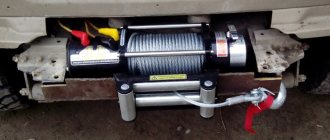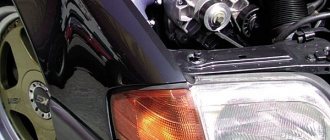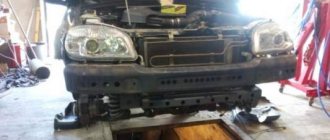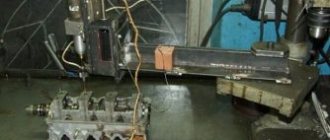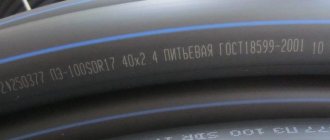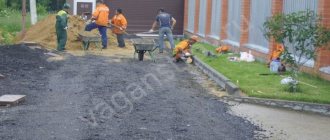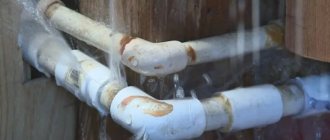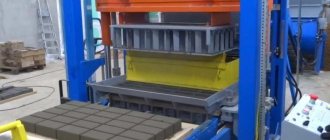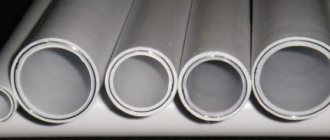Modern society cannot imagine its life without automobile technology. As the number of cars increases, the number of worn tires in the world also increases proportionally. Machines for processing tires into crumbs are not able to cope with such a volume of rubber waste.
As a result, an alternative method was developed in which car tires undergo a process of separation into useful elements. This method is called pyrolysis.
What is needed to make gasoline from tires?
- — rubber waste;
- - bake;
- — distiller;
- - fireproof containers.
A guide to making gasoline from tires at home:
- To produce gasoline from tires, you first need various containers. First of all, you will need a metal barrel with a tight-fitting lid. You also need a heat-resistant tube, which is connected to the lid. The vessel you create will be used as a retort (a device used in chemical laboratory and factory practice for distillation or for reproducing reactions that require heating and are accompanied by the release of gaseous or liquid volatile products, which are immediately subjected to distillation). Choose any container for using the condenser, as well as a durable container with 2 tubes for the water seal. Place one of the tubes under water and the other on top.
- Now you can assemble a device for producing liquid carbon. Connect the pipe that comes out of the retort lid to the condenser. You need to insert a hose into the latter. On the other hand, the hose must be inserted into the water seal tube, which is under water. The second valve tube is connected to the stove on which the retort is installed. This creates a closed system for high temperature cracking.
- Place the rubber waste in the retort and cover with a lid. Next, the contents must be heated over high heat. High temperatures cause rubber to degrade and break the bonds between molecules. After this, sublimation occurs (the transition of a substance from a solid state immediately to a gaseous state, bypassing the liquid state) of the separated molecules. They enter the condenser at a lower temperature. As a result, condensation of accumulated vapors occurs. And we get artificial oil, namely the liquid state of matter.
- Pyrolysis produces both liquid hydrocarbons and an additional mixture of gases. Therefore, initially the system is assembled as a closed system. The main part of the gas - methane - enters the furnace, passing through all elements of the device. There it burns remarkably well, allowing you to maintain the desired temperature without consuming excess fuel.
- But the resulting substance in the condenser is not yet gasoline from tires. To complete the process, you need a distiller - like the one used for moonshine stills. But you need to avoid open fire and take an electric stove. The boiling point is maintained up to 200°C. The quality of the waste taken to obtain “synthetic oil” is of great importance.
draw your attention to
that it is absolutely not worth carrying out such experiments within a city apartment. For the above-described production of gasoline from tires, you need a well-ventilated room. The pyrolysis process is accompanied by the release of sulfur oxides and strong smoke.
In addition, it is impossible to obtain gasoline from high-quality tires without additives. This gasoline has a low octane number of gasoline produced, which does not allow it to be used in all internal combustion engines.
Source
What is tire pyrolysis: the essence of the operating method of a pyrolysis tire processing plant
The number of cars in Russia is increasing every year , and at the same time the number of worn tires is also growing.
The main recycling method - processing into crumb rubber - does not cover the full volume of secondary rubber-containing raw materials.
And although in recent years the rate of production of seamless coatings and asphalt from tire crumbs has increased significantly, large volumes of used tires remain unutilized.
What happens to the rest of the raw materials? Basically, rubber simply accumulates in landfills, increasing their already overwhelming volume.
Recycling by pyrolysis is a modern way of recycling tires and other rubber goods. It is successfully used abroad, but is not very popular in Russia yet.
Benefits of tire pyrolysis
Recycling rubber goods using pyrolysis plants has advantages over other methods:
- the products of this method are not toxic or harmful, and therefore are not environmentally hazardous;
- pyrolysis - production without waste, everything that comes out in the end is then used in industry instead of recycled materials;
- this type of tire treatment is energy efficient;
Pyrolysis of auto waste is the only correct method that protects the environment, is beneficial for building a business and is cost-effective, allowing you to obtain secondary raw materials for creating other raw materials (energy, electricity).
How is tire recycling done?
Pyrolysis is the most cost-effective way to process rubber from used tires and other rubber goods, while not polluting the environment with combustion gases .
It goes like this:
- The tires are pre-separated into front and side tires using a bead cutter.
- The cut tires are loaded into a special container (retort), which is sealed and placed in the oven.
- The furnace heats up to 450 0 C and the pyrolysis process begins, during which gas is released. When the decomposition of the raw material ends, the retort is removed and replaced with a new one.
- After cooling, which takes several hours, the container is unloaded, separating the carbon residue from the metal cord.
Obninsk scientists have learned to turn old tires into a source of income
Household waste of the fourth, highest hazard class - this is what ordinary car tires become when they reach the end of their life. Simply taking worn out tires to a landfill or burying them in the ground is not the answer. Both outdoors and underground, tires will take more than 100 years to decompose. And if old tires catch fire, carcinogens and other harmful chemical compounds will be released into the environment.
“Many hazardous substances during the combustion of worn tires do not decompose, but are released into the air,” explains Natalya Nikolaikina, professor at the Department of ChemBiotech at Moscow Polytechnic University. — Sulfur, benzopyrene, furan, dioxins, and a number of other compounds pose a threat to both the environment and human health. To avoid this, it is necessary to recycle used tires.”
But the problem is that it is not thousands or even hundreds of thousands of kilograms of automobile rubber that need to be disposed of. According to various estimates, up to one and a half million tires fall into disrepair in Russia every year. The costs of processing them are enormous, and the law imposes them on.
Tire manufacturers have a choice between three options. The first is to pay an environmental fee to the budget and thereby free yourself from the obligation to recycle tires, the second is to independently recycle used tires, and the third is to hire a third-party contractor.
“Tire manufacturers and importers have taken the third path. In January of this year, a specialized union was created. Manufacturers and importers enter into contracts with processors, they dispose of them, and then the producers report to the state,” explains Ms. Churmeeva.
To recycle tires, Russian recyclers today mainly use the technology of mechanical crushing of worn rubber. When ground into fine powder, it is used for a variety of purposes, such as coatings and a range of rubber products.
“This is a very simple process that does not require complex equipment,” explains Ms. Nikolaikina. - To obtain more valuable components from tires, for example, sorbents, which are then used to purify gases, it is necessary to use another process - pyrolysis. In special sealed containers with limited access to oxygen, the tires heat up to a high temperature, but do not burn. Therefore, harmful compounds are not released into the atmosphere, but decompose. There is no environmental damage." Pyrolysis technology is in demand in many countries. However, the currently created pyrolysis plants have one common drawback - the pyrolysis process takes place in a gaseous environment. And any gas is a poor conductor of heat, so the process of processing one batch of rubber takes from 8 to 12 hours. All this time you need to heat the container with the tires, and the energy consumption is corresponding.
To solve this problem, Japan has developed a technology that can significantly reduce energy costs. There they learned how to evacuate gas from containers and carry out pyrolysis in a vacuum. But only Russian scientists from Obninsk were able to offer a truly revolutionary solution. By replacing gas with liquid metal, they reduced the pyrolysis time, and, as a result, energy consumption by tens of times.
“We also put used car tires in a sealed container. But this container contains not gas, but liquid metal, in particular, we use molten lead,” says Vladimir Ulyanov, leading researcher at the Institute of Physics and Energy named after. A.I. Leypunsky. “Liquid metal is an excellent coolant, so the entire process of processing one batch of tires takes us no more than one hour.”
According to Mr. Ulyanov, it is not surprising that it was Russian scientists who managed to get ahead of their foreign colleagues and develop the technology of liquid metal pyrolysis. The idea itself - replacing gas with metal - is quite simple. It’s not difficult to imagine how the recycling process should go. It is much more difficult to implement your plans. To do this, you need to know how liquid metals behave at different temperatures.
At the moment, only Russia has complete experience in handling liquid metals. At the initial stage, similar developments were carried out in the USA, Great Britain, and France. However, now only Russia has these reactor technologies
“At the moment, only Russia has full experience in handling liquid metals. Since the early fifties of the last century, we have been creating reactor plants that use various liquid metals - both sodium and lead,” explains Mr. Ulyanov. — At the initial stage, similar developments were carried out in the USA, Great Britain, and France. However, now only Russia has these reactor technologies. And we are always thinking in what other area, besides the main one, they can find application. This is how the idea arose to develop a plant for recycling car tires.” The installation, created in Obninsk, allows you to process up to 1,000 kg of used tires per day.
The savings achieved by reducing processing time compared to traditional gas pyrolysis technology range from 2 to 4 times, depending on the gas apparatus used. And if you use heating from burning pyrolysis gas and optimize thermal insulation, the savings will be from 8 to 18 times.
Another feature of the innovative pyrolysis technology developed by Obninsk nuclear scientists is that the main processes take place at a relatively low temperature - from 400 to 500 °C. If the temperature is higher, it will be possible to obtain mainly gaseous products from worn tires. And liquid products have the greatest value. “We get four main processed products,” says Mr. Ulyanov. — The first is metal cord, which is initially present in tires. It doesn't have much value and we consider it scrap metal. The second is pyrolysis gas, an analogue of natural gas. It can be used to heat the installation itself in which tires are recycled. The third product is solid - it is carbon black, a raw material for the production of sorbents and black pigment in paints. And finally, the fourth, most valuable is pyrolysis liquid, which is similar in composition to synthetic heavy oil. It can be considered an analogue of fuel oil.”
Any oil refinery can separate gasoline, kerosene and other useful fractions from the pyrolysis liquid. There is also a simpler option for using it, by analogy with fuel oil - burning it as heating oil. A kilogram of fuel oil costs 10–12 rubles on the market, and processing 1,000 kg of tires yields about 300 kg of such liquid.
However, selling this product as regular heating oil would be wasteful. Pyrolysis in liquid metal gave Russian scientists a completely unexpected gift: it turned out that the pyrolysis liquid obtained with its help contains much more valuable substance - limonene - than with traditional pyrolysis.
“Limonene is also formed during traditional pyrolysis, but it has time to decompose due to the long heating time,” explains Mr. Ulyanov. — Our heating time is shorter, so more valuable products are preserved. Our pyrolysis liquid contains up to 20-30% limonene. When processing 1,000 kg of tires, up to 60–90 kg of limonene can be obtained.”
Limonene is an excellent organic solvent; it is used, for example, in 3D printers for cleaning after printing. This substance is absolutely safe for human health, therefore it is widely used in the production of various synthetic detergents. And most of all, high-purity limonene is in demand in perfumery. It is used as an aromatic fragrance in the production of cosmetics and even medicines. Not only is it not a carcinogen, but it also does not cause allergies. At least not more often than other flavorings, including those of natural origin. A kilogram of technical limonene costs from 500 to 900 rubles on the market today. Highly purified cosmetic limonene is even more expensive. The cost of limonene obtained through liquid metal pyrolysis will not exceed 200 rubles per kilogram. This means that recycling tires in this way is not only environmentally friendly, but also profitable.
The demonstration sample of the pyrolysis plant in Obninsk was specially made compact. It is a little more than a meter in height and easily fits into the back of a KAMAZ.
“Small dimensions are a fundamental point for us,” says Mr. Ulyanov. — It just so happens that in Russia there is no practice of transporting tires to a recycling plant. The installation will have to be brought to a tire warehouse, and when everything is disposed of, it will be sent to the next one. Small dimensions and transportability will also be important when promoting our development in foreign markets, since we are targeting not only Russia.”
Tire manufacturers and importers in Russia are generally interested in diversifying technologies for recycling used tires. However, so far this process is not going as smoothly as we would like.
“Rosprirodnadzor currently has no questions about only one recycling technology - mechanical crushing of used tires,” explains Ms. Churmeeva. — The regulator has questions regarding thermal methods. The March letter from the supervisory agency states that thermal treatment of waste, which includes various pyrolysis methods, cannot be considered as disposal; it is considered neutralization. Perhaps Rosprirodnadzor needs to clarify these terms. After all, as long as there is no clear position of the regulator that thermal treatment of waste is recycling, tire manufacturers will not be able to consider companies that deal with it or cooperate with companies as potential contractors.”
There is hope that all obstacles can be removed in the near future. Very soon, at the XIX Festival of Youth and Students taking place in Sochi, the development will be presented to Vladimir Putin. In the Year of Ecology, technology that allows not to pollute the atmosphere, but to dispose of hazardous waste for benefit, simply cannot go unnoticed.
Output products
There are several output products. This:
- liquid fuel;
- carbon-containing residue;
- pyrolysis gas;
- metal cord tires.
Each of these products can be used beneficially.
Liquid output
The output liquid obtained during rubber pyrolysis is synthetic oil , similar in composition to natural oil.
With additional processing, it can replace many fuels and lubricants - gasoline, diesel fuel, oil, etc.
In the US, more than 100 million used tires are turned into diesel fuel every year, and one tire is equivalent to 30 liters of oil.
In a pinch, unprocessed pyrolysis oil obtained from tires can be used as fuel for furnaces and boilers.
Solid carbonaceous residue
Used in various fields:
- in the manufacture of certain rubber products (for example, conveyor belts, insulation materials or new tires);
- in paint and varnish and cement production - as a dye;
- used as a sorbent instead of activated carbon;
- can serve as solid fuel or as a component for liquid fuel.
Pyrolysis gas
This volatile component is similar in composition to natural gas.
is converted into a liquid fraction during the operation of pyrolysis equipment , and the non-condensable residue is used to maintain the combustion of the furnace.
Metal cord
This is the tire core, the only component that does not undergo changes during pyrolysis.
The reinforcing material of car tires is high-quality steel, which, with additional processing, is successfully used as binding wire or remelted .
Find out more about steel cord and how it can be used here.
Pros and cons of this processing method
Comparing tire pyrolysis with the two most common approaches to recycling rubber waste (crumb processing and traditional combustion), we can highlight both the strengths and weaknesses of this method.
ProsCons
|
|
|
|
|
|
|
|
Is it possible to make the equipment yourself?
The design of such a pyrolysis plant for rubber processing is simple; it can be made with your own hands.
This will require pipes of various diameters, shut-off valves and a thermometer.
You can take an iron barrel as a heating chamber, and use a can for a retort.
This equipment will function, but only for scientific and educational purposes. The resulting product is unsuitable for use and requires further purification and processing.
The volume of such “home” production does not allow us to talk about serious benefits.
To independently build a plant that processes an acceptable volume of raw materials, you will need up to 10 million rubles, which is comparable to the price of an average factory-made pyrolysis line.
Pyrolysis is an unsafe process. If air enters a homemade retort during operation of the unit, an explosion may occur , which can result in serious injury.
If we talk about starting a business for converting tires into fuel, it is better to purchase ready-made equipment manufactured by specialists.
Pyrolysis lines of various capacities are now available on the market. Such installations include all kinds of additional components to speed up the process , increase the quantity and quality of output products:
- scrubbers - devices that cool pyrolysis gas with a special reagent and partially condense it into a liquid fraction;
- separators - designed to reduce the moisture content of the remaining gas before feeding it into the furnace;
- condensers - they are where the final conversion of the gaseous fraction into liquid occurs after the scrubber;
- filtering facilities for additional purification of gases emitted into the atmosphere.
How does the stove work?
The technological process on a factory production line goes like this:
- The heated gas is supplied from the furnace through a pipeline to the scrubber, where cooling and partial condensation take place.
- It then passes through special piping, which provides additional cooling, to condensers for final conversion into liquid fuel.
- The remaining gas, which cannot be converted into liquid, is sent for drying to a separator, from where it goes to a pyrolysis furnace for further processing.
Suppliers of pyrolysis plants
Tekhnokompleks LLC (Rostov-on-Don) offers PIROTEX equipment, which provides the maximum volume of high-quality liquid fuel.
Prices vary widely depending on the performance of the equipment and the degree of automation: from RUR 2,870,000.00. for an installation with a capacity of 2 tons per day up to 35,900,000.00 rub. for a monster with 32 retorts, capable of absorbing 28 tons of raw materials per day.
All models and prices are presented in more detail in the price list on the company’s website.
The company also supplies additional equipment that facilitates work with the installation: monorail tracks with electric hoists and hydraulic tippers for crucibles.
The installation for processing tires "ROSEKO" manufactured by LLC "RM" (St. Petersburg) is capable of producing gas and diesel fuel.
The equipment is compactly mounted in a single container and is capable of recycling 2.5 tons of raw materials per day.
The cost of installation is 9 million rubles.
The T-PU1 pyrolysis line produced by PTK Pyroliz-Ekoprom LLC (Nizhny Novgorod) costs only 2.5 million rubles - in the basic configuration with one retort.
It is better to purchase one or two more loading containers for continuous operation. The installation is capable of processing up to 6 cubic meters of raw materials per day, consuming only 1.1 kW/h of electricity.
Results
So, what is good about pyrolysis:
- Compared to combustion, emissions of harmful substances into the atmosphere are minimal , and they are subject to additional purification;
- all products obtained during the process are sold in industry , there is no need to spend money on recycling any residues;
- low energy consumption – installations generally consume from one to several kilowatts of electricity per hour;
- the equipment actually provides itself with fuel using the generated gas.
In light of such advantages, recycling tires by pyrolysis seems to be a profitable activity.
Of course, Russia has large reserves of natural oil and gas, but they are not endless.
In addition, in addition to the purely commercial side, pyrolysis is a real salvation for the environment, so for those who think about the future, this method of recycling hazardous waste cannot but seem attractive.
Source
Advantages of tire pyrolysis
This method is used in a wide variety of industrial sectors: mechanical engineering, petrochemistry, paper production. Why is this method better than others?
Firstly, the damage caused to natural ecosystems is minimal compared to the results of burning rubber goods.
Secondly, this process is practically waste-free, very effective and low-cost in terms of energy. The equipment consumes very little electricity. Everything that is formed as a result of pyrolysis does not require additional processing and is successfully used in industry.
Thirdly, this method is universal, allowing you to transform different raw materials.
And fourth, as a result, new fuel and raw materials are obtained. During pyrolysis processing, the system can provide itself with fuel independently.
How does pyrolysis occur?
Tire pyrolysis is a highly efficient and inexpensive method for processing rubber products (rubber), as well as used car tires. As a result of the process, there is no environmental pollution.
The main stages of the technological process, as a result of which rubber waste, as well as worn-out car tires, are disposed of:
- Using special knives, the tires are divided into side and front parts.
- Next, the raw materials are loaded. The separated material is placed in a retort and hermetically sealed, and then loaded into the oven.
- As a result of heating, rubber decomposes and gas is released. After the process is completed, the retort is removed from the heating chamber and replaced with a new one. The temperature in the oven is 450°C.
- After cooling for a long time, remove the contents from the container. Liquid hydrocarbons are separated from the cord.
During closed combustion of rubber, no oxygen is required. Recycling tires by pyrolysis is considered completely waste-free; all products resulting from the reaction are widely used in the oil refining industry.
When burning in a furnace, chemical reactions occur that decompose rubber into gaseous petroleum components, carbon powder and metal cord.
Reaction products
As a result of processing rubber waste, several types of products are released:
- Liquid fuel.
- Residue containing carbon.
- Gas during pyrolysis.
- Metal reinforcing wire.
Liquid
The liquid residue is essentially synthetic oil, similar in composition to natural oil. When processing the resulting raw materials at oil refineries, it is possible to obtain such types of materials as gasoline, fuel oil, as well as synthetic oil for automotive vehicles.
Materials processed in the installation and the volume of pyrolysis oil obtained from various wastes:
| Name | Type of waste | Pyrolysis oil output |
| Tire waste | Truck tires cord steel | 40%- 45% |
| Nylon tires | 40% | |
| Moped bicycle tires | 35% | |
| Waste plastic | Polymer bags, household | 50% |
| Packages or bags | 60% | |
| Waste cable skin | PE cable | 35% |
| PVC cable (requires dechlorination module) | 25% | |
| Rubber insulated cable | 35% | |
| Telephone cable | 50% | |
| Waste paper, waste paper mill | Rough material | 15% |
| Washed material | 20-25% | |
| PE materials | 70% | |
| shoe waste, soles | Sports shoes, soles | 25-33% |
| Shoes with black rubber soles | 35% | |
| Chewing gum, rubber sole | 45% | |
| Other waste | Rubber tubes | 30% |
| Carpets | 35% | |
| Metal-plastic waste | 30% | |
| Car plastic, headlights, upholstery…. | 50% | |
| Drink bottles | 50% | |
| Recovery of waste PMMA (polymethyl methacrylate). | ||
| Waste crude oil and oil residues. | 70 — 80% | |
| Oil sludge* | 20 — 45% | |
| Waste oils | 75 — 90% |
* The yield of pyrolysis oil from these wastes depends on the volume of oil fractions in the material
Boiler design
The pyrolysis plant for tire recycling has the following main elements in its design:
Retort
A sealed container in which rubber waste and tires, after preliminary grinding, undergo decomposition processes as a result of pyrolysis into their main components before further processing.
Made from durable metal to avoid burning through the walls.
Combustion chamber
The design of the firebox consists of two compartments for burning fuel. The main combustion occurs in the first chamber , where the required temperature for the technological process is maintained. In the upper compartment, fuel is completely burned to avoid emissions of harmful substances into the atmosphere. The afterburning chamber is equipped with holes for natural air supply.
Heat exchanger
This design is a connection of metal pipes in which the pyrolysis gas cools and separates into its components. The dried gas is used for further combustion in a furnace. The liquid component undergoes subsequent processing.
Application of the method in Russia and in the world
Despite the relative “youth” of the technology, recycling of tires through pyrolysis is already used in many countries. This method is most popular in the USA: more than 100 million used tires are processed in pyrolysis plants per year.
At the beginning of 2022, 15 pyrolysis plants were registered in Russia, but only 5 of them are operating. More than 90% of tires are recycled in environmentally hazardous ways. The slow transition to an alternative environmentally friendly method is associated with the high price of equipment and the labor-intensive process.
Is it possible to make the equipment yourself?
Equipment for recycling tires can be assembled with your own hands; the design of the pyrolysis plant is simple. The following basic elements are required for manufacturing:
- Metal pipes of various diameters for individual units of the apparatus.
- Taps and valves for controlling the fuel supply to the stove.
- Thermometers that will be used to monitor internal processes and temperature readings.
- A metal barrel with a volume of 200 liters will serve for the manufacture of a combustion chamber.
- An ordinary household can can be used as a retort, after modifying it with airtight connections.
Self-made equipment will work, but only as a household appliance for scientific research. Without additional equipment for further processing of the resulting raw materials, the products of the household pyrolysis process are of little use for their intended purpose. The economic benefit of using such an installation will be invisible due to the small possible volume of tires.
To increase the benefits when processing tires into suitable fuel, it is necessary to use ready-made pyrolysis plants manufactured by specialists.
The resulting raw materials must be further improved and processed; for this purpose, additional auxiliary units are used in industrial units:
- Scrubber. A device that cools the resulting pyrolysis gas using special chemicals. Partial condensation into liquid occurs.
- Separator. Reduces the moisture level of the resulting gas before further supply to the furnace.
- Capacitor. Finally converts the resulting gaseous fraction into liquid.
- Filters. Protects against harmful substances entering the atmosphere as a result of combustion.
During the pyrolysis process, it is necessary to follow the rules of safe operation.
Oven operation
The operating method of an industrial pyrolysis plant for processing rubber products and tires involves several main production stages:
- Preparation of material for its further decomposition in a retort.
- The resulting raw material during pyrolysis is fed into a device for cooling and partial condensation of the pyrolysis gas.
- When passing through the condensing pipeline, the final separation into liquid and gaseous components occurs.
- When the remaining gas is dried, it is supplied for further combustion in a furnace.
Large processing plants use additional catalyst units in the rubber decomposition process.
In our country, the method of technological rubber processing is not yet widely used, but worthy examples of domestically produced plants are available on the market.
Source
Types of pyrolysis by type of material burned
The variety of materials suitable for pyrolysis processing is very large. In Russia, in addition to plastic and tires, methane, wood, and carbon compounds become pyrolysis raw materials.
To convert methane into acetylene, it is necessary to use substances that catalyze the process at high temperatures. Trimerization of methane occurs in the presence of activated carbon and does not consume much energy. On the contrary, the production of acetylene initially requires high temperature.
Wood is processed at low temperatures. Pyrolysis of this raw material is practically waste-free and releases materials such as methanol, acetic acid, resins, and acetone.
The cracking method is used to refine carbon-containing compounds, resulting in the formation of benzene, ethylene and other hydrocarbon compounds.

